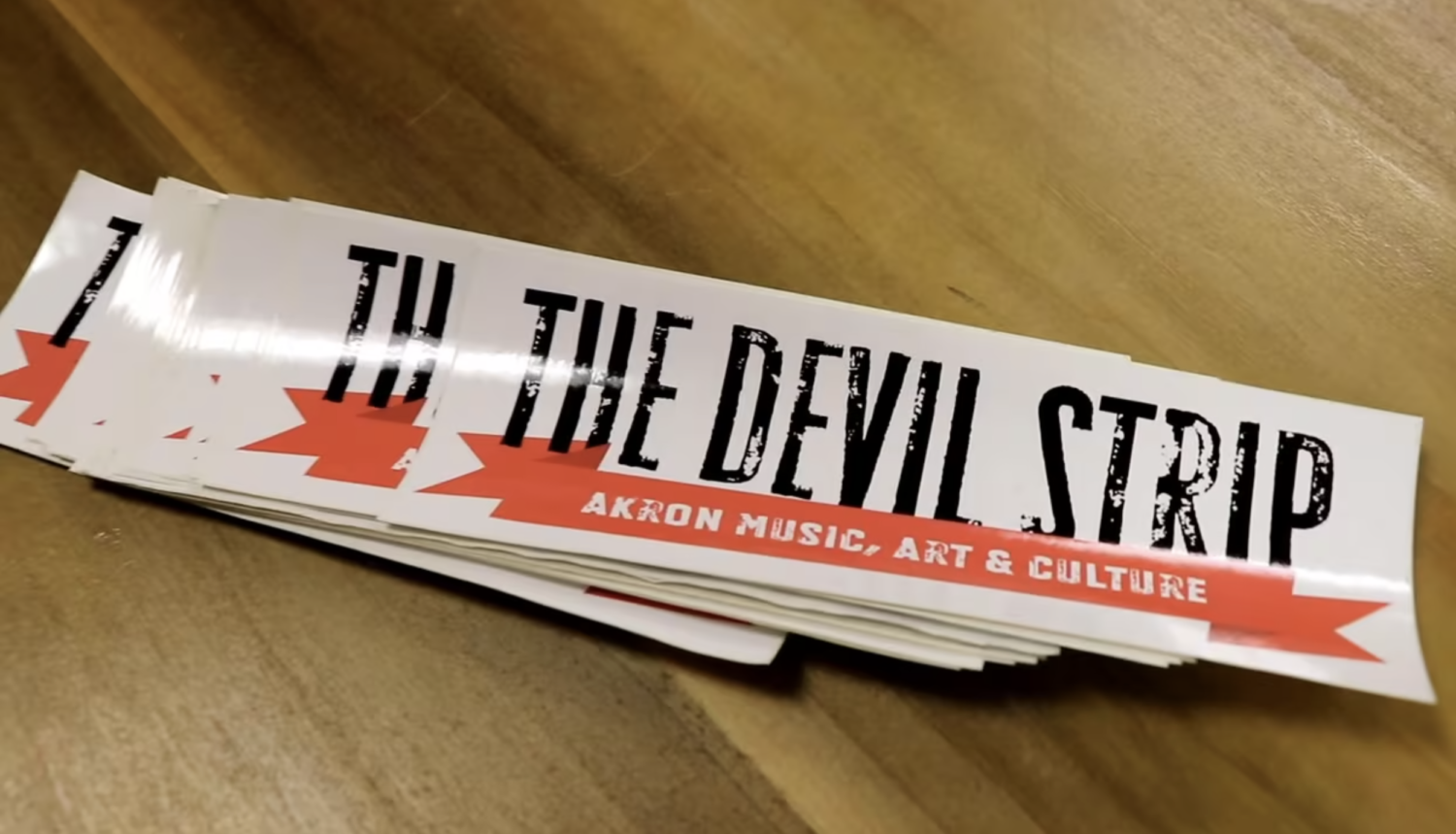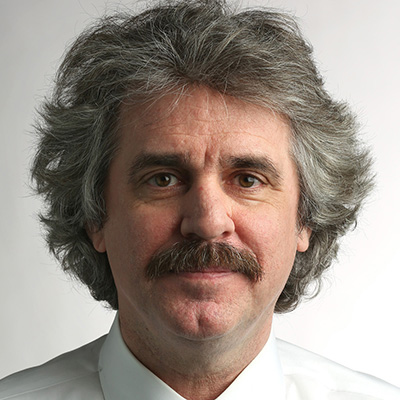This article was originally published on Northwestern University’s Medill Local News Initiative website and is republished here with permission.
An Ohio news outlet that’s owned by the readers it serves. A start-up newsletter for Iowa’s Black residents. A student-reported website bringing information to a news desert in Kansas. And a digital-only Ohio newsroom modeling solutions journalism.
These are some of the innovative news organizations profiled in a new video reporting project by students at Northwestern University’s Medill School of Journalism, Media, Integrated Marketing Communications.
Medill Professor Craig Duff’s class of 14 students worked in pairs to visit seven Midwest news operations in a spring project that came about after the COVID-19 pandemic disrupted other plans.
“We do something called Medill Explores every year, where the entire graduate school in the middle of the quarter takes a week off, does some sort of project, adventure, usually travel-related,” Duff said. “The last couple years I’ve taken students to Buenos Aires. This year that was not possible. So we came up with this project instead.”
Eudora, Kansas, is not Buenos Aires, but the students made the adjustment.
“I’ll admit a lot of our classmates, knowing that Medill Explores included international travel, were like, ‘What is this? We’re going to Akron and Iowa?’ But it ended up being very beneficial,” said student Melody Guernsey, who worked on the profile of Black Iowa News.
Duff got support from the Listening Post Collective, which helps journalists and nonprofits connect with communities. The Listening Post’s Jesse Hardman and Fernando Diaz helped the Medill students set up their visits and also assisted with the video editing afterward. The Medill Explores program is financed with the support of Medill’s alumni and friends.
Here are three of the news outlets profiled.
[the_ad id=”667826″]
Devil Strip in Akron, Ohio
The Devil Strip is a monthly magazine in Akron, Ohio, that was largely focused on entertainment until the pandemic shut down live performances, compelling the staff to focus more on social justice and investigative projects.
What sets the Devil Strip apart from many local news outlets around the country is its organization as a co-op, with hundreds of readers as owners.
“We wanted to explore what that was, how it works, and how it benefits the community and the organization itself,” said Medill student Laura Harris, who produced the video with Yuhan Ma.
The Devil Strip was founded in 2015 by Chris Horne, taking its name from the phrase that locals use to describe the thin strip of grass that’s between the sidewalk and the street.
At a time when hedge funds are taking control of many legacy news outlets, grassroots ownership has its advantages.
“We can never get bought out by a larger corporation or one person,” said Devil Strip reporter Noor Hindi. “No one person owns the Devil Strip.”
“The current business model is completely broken for local news,” said Tim Franklin, Medill senior associate dean and John M. Mutz Chair in Local News. “So the industry is going to have to get creative about how it’s going to fund its local journalism. I think co-ops are definitely one way to do that.”
MORE FROM POYNTER: Funding Models for the Future Newsroom
Black Iowa News
Black Iowa News, which delivers its information by Substack newsletter only, is an example of how a single determined person can make a difference in the modern news environment.
Dana James, a former Des Moines Register reporter, started Black Iowa News at the tart of the pandemic because she thought the state’s Black population (about 4% of the population) was underserved by the news media, especially at a time when people of color were dying of the virus at a higher rate.
“She saw a disparity among Blacks in Iowa and really wanted to address it,” said Medill student Guernsey, who reported on James’ efforts along with Isabelle Stroobandt. “… We learned how one person can really do so much to change things.”
Black Iowa News offers three options: some news for free, more for a monthly subscription and still more for an annual subscription.
James told the Medill students that a newsletter rather than a website was the most practical platform for her.
“When you build a website, those tech issues just consume your time,” James said. “And here we are in the middle of a pandemic. People live and die by words and by what was happening. I didn’t have time to spend two hours a day worried about the back end of the website. I just wanted to be writing.”
Silvia Rivera of Listening Post Collective said newsletter publishing can give a voice to people who have often been on the margins.
“The Substack model and the subscription model that it employs is one that is filling a really important need and creating a very easy way for you to support (it),” Rivera said. “So I think we’re going to see a lot more of that and it’s going to be a game-changer hopefully for communities that haven’t been traditionally served by news media.”
[the_ad id=”667872″]
Richland Source in Mansfield, Ohio
An 8-year-old digital-only news outlet in Mansfield, Ohio, the Richland Source has become known for both its strong local ownership and its emphasis on solutions journalism.
“They don’t just report stories, they report on ways to solve problems in their community,” said Medill student Kelly Heinzerling, who profiled the Source along with Kayla McDermott.
Medill’s Franklin said the Source bears watching.
“Here we have in the middle of Ohio what I think is arguably one of the most innovative local news organizations in the United States,” Franklin said. “It does solutions journalism, so it says to the community we’re not just going to report on the problems that are happening here but we’re also going to take a look at what’s working.”
This place was actually doing solutions journalism before it was called solutions journalism,” said the Source’s city editor, Carl Hunnell.
And in a time of when many communities are finding their local outlets shrinking on orders from the national chains that own them, the local nature of the Source seems like a big plus.
“It is very important to have that local presence,” said Source reporter Katie Ellington, “and our readers know that not only do our reporters live here, but the people that own the Richland Source live here. The publisher lives here. The editor lives here.”
Beyond ‘Newstown’
Duff, the professor running the project, produced a documentary last year called “Newstown” about the closing of the Youngstown Vindicator in northeast Ohio and how various news outlets took creative steps to fill the gap. Clearly, more creativity will be needed: Medill visiting professor Penny Abernathy found that more than one-fourth of American newspapers had disappeared in the 15 years before her 2020 “news deserts” report.
“In doing ‘Newstown,’” Duff said, “I was seeing some of those innovations that were happening there. I was really intrigued to see if those things were happening elsewhere and, given all the dire things we’re hearing from our colleague Penny about the state of news deserts and newspapers in the country, what else is working out there.”
Duff said the student project was “an opportunity to get out there … and to discover that there are really interesting things on the ground that are solid solutions.”
Franklin, who heads the Medill Local News initiative, saw the video project as a showcase for inventive thinking.
“The thing that I really love about this is that it puts together in one package a visual, in-depth look at some of the most innovative local news projects in the country,” Franklin said. “…I don’t think there’s a one-size-fits-all solution to the local news crisis. I think there is going to be a combination of models that work. One of the things I really enjoyed in watching these videos is that they captured the ranges of possibilities for what the future of local news may look like.”
Duff thinks the work may make his students optimistic because they’re “seeing the energy out there after being told so often as journalism students that their industry is in decline.”
Of course, not all of the students’ experiences made it into the videos. For example, the team that visited the Richland Source sampled the local color.
“The students ate raccoon at the Raccoon Festival,” Duff said. “They didn’t put that in the story.”
[the_ad id=”667878″]
Next in this series: How college students are boosting local news in Kansas and Indiana.







